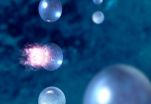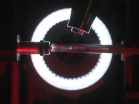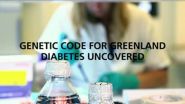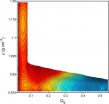(Press-News.org) Stanford University researchers have devised a noninvasive way to detect heart-transplant rejection weeks or months earlier than previously possible. The test, which relies on the detection of increasing amounts of the donor's DNA in the blood of the recipient, does not require the removal of any heart tissue.
"This test appears to be safer, cheaper and more accurate than a heart biopsy, which is the current gold standard to detect and monitor heart-transplant rejection," said Stephen Quake, PhD, professor of bioengineering and of applied physics. "We believe it's likely to be very useful in the clinic."
Quake, the Lee Otterson Professor in the School of Engineering and a Howard Hughes Medical Institute investigator, is a senior author of the study, which will be published June 18 in Science Translational Medicine. Kiran Khush, MD, assistant professor of medicine, is the other senior author. Postdoctoral scholar Iwijn De Vlaminck, PhD, is the lead author.
The test, called a cell-free DNA test, is different from another blood test, AlloMap, used to detect rejection. The commercially available AlloMap uses a blood sample to analyze the expression of immune-system genes involved in rejection. The researchers found that the cell-free DNA test outperformed AlloMap by a substantial margin.
"We've found that this cell-free DNA assay is a very accurate way to diagnose acute rejection, sometimes weeks to months before a biopsy picks up any signs," Khush said. "This earlier detection may prevent irreversible damage to the transplanted organ."
Recipients with signs of rejection can be placed on anti-rejection medications to mitigate the immune system's attack. Sometimes, however, the rejection episode is too strong and a second transplant is required.
Currently, heart-transplant recipients undergo dozens of heart biopsies in the months and years after their transplant. During a biopsy, a small tube is threaded through the jugular vein in the neck, and a serrated pincer is used to pluck off small bits of heart tissue for analysis. The procedure is uncomfortable and may cause complications such as heart rhythm abnormalities or valve damage. It's also expensive and time-consuming, and delivers results that can be subjective or can vary according to the sampling location within the heart.
The study of 65 patients (21 children and 44 adults) extends and confirms the results of a small pilot study completed in 2011 by the Stanford researchers. Whereas the earlier study used stored blood samples and medical histories from seven people, the new study followed patients in real time before and after transplant. The researchers directly compared the results of simultaneously collected biopsies and blood samples, and tracked how the values changed during the rejection process.
The cell-free DNA technique hinges on the existence in the genome of naturally occurring regions of variation called single nucleotide polymorphisms, or SNPs. In 2008, Hannah Valantine, MD, then a Stanford professor of cardiology, realized that a DNA-sequencing technique developed in Quake's lab to pick out small quantities of fetal DNA from a pregnant woman's blood might also be useful to track the fate of a transplanted organ. (Valantine, a co-author of the new study, is now chief officer for scientific workforce diversity at the National Institutes of Health.)
The cell-free DNA test is possible because heart cells attacked and killed by the immune system release their genetic material into the bloodstream. It's difficult, however, to pick out the tiny fraction of donor DNA from the overwhelming majority of recipient DNA circulating in the blood.
In the pilot study of 2011, the researchers first used the presence of the Y chromosome to track the donor DNA when a woman received a heart from a male donor. Then they hit upon using differences in SNPs instead; this method doesn't require a gender mismatch between donor and recipient. They found that, in transplant recipients not experiencing rejection, the donor DNA accounted for less than 1 percent of all cell-free DNA in the recipient's blood. During rejection episodes, however, the percentage of donor DNA increased to about 3 or 4 percent.
In the new study, the researchers monitored 565 samples from the 65 patients to assess the assay under real-time clinical conditions. They found they were able to accurately detect the two main types of rejection (antibody-mediated rejection and acute cellular rejection) in 24 patients who suffered moderate to severe rejection episodes, one of whom required a second transplant. They were also able to detect signs of rejection up to five months before the biopsies indicated anything troubling.
"We wanted to test this technique on a larger scale," said Quake. "This is nearly 10 times the number of patients and 10 times the number of samples that we analyzed in the pilot study. We found the cell-free donor DNA test is clearly better than a biopsy or any of the other methods currently used to monitor transplant patients."
Although much remains to be done to bring the technique into the clinic for routine use — for example, optimizing scale-up and streamlining the analysis so that individual samples can be quickly processed — the researchers are optimistic that biopsies will eventually be used only when a blood test indicates a potential problem. They are also hopeful it can be generalized to detect the rejection of organs other than the heart, and to diagnose other problems such as infections that plague organ transplant recipients.
"This test has the potential to revolutionize the care of our patients," said Khush. "It may also allow us to conduct several diagnostic tests simultaneously. For example, we could also look for microbial sequences in the blood sample to rule out infection or other complications sometimes experienced by transplant recipients. It could allow us to determine whether shortness of breath experienced by a patient is due to an infection or the start of a rejection episode. It could be a one-stop shop for multiple potential problems."
Stanford has applied for a patent relating to the test described in this study. Quake is a consultant for and holds equity in CareDX Inc., a molecular diagnostics company that has licensed a patent from Stanford related to a method used in the study and is developing it for clinical use.
INFORMATION:
Other Stanford co-authors of the study are clinical research coordinators Calvin Strehl and Garrett Cohen; research nurse manager Helen Luikart, RN; research manager Norma Neff, PhD; research assistant Jennifer Okamoto; professor of pediatric cardiology Daniel Bernstein, MD; and former postdoctoral scholar Thomas Snyder, PhD. Snyder holds equity in CareDX Inc.
The study was funded by the NIH (grant RC4AI092673) and the Howard Hughes Medical Institute.
Information about Stanford's Departments of Bioengineering and Medicine, which also supported the work, is available at http://bioengineering.stanford.edu and http://medicine.stanford.edu.
The Department of Bioengineering is jointly administered by the School of Medicine and the School of Engineering.
The Stanford University School of Medicine consistently ranks among the nation's top medical schools, integrating research, medical education, patient care and community service. For more news about the school, please visit http://mednews.stanford.edu. The medical school is part of Stanford Medicine, which includes Stanford Hospital & Clinics and Lucile Packard Children's Hospital. For information about all three, please visit http://stanfordmedicine.org/about/news.html.
The Stanford School of Engineering has been at forefront of innovation for nearly a century, creating pivotal technologies and businesses that have transformed the worlds of technology, medicine, energy and communications and laid the foundation for Silicon Valley. The school advances modern science and engineering through teaching and research. The school is home to nine departments, 245 faculty and more than 4,000 students, tackling the world's most pressing problems in areas like human health and environmental sustainability. For more information, visit http://engineering.stanford.edu.
Print media contact: Krista Conger at (650) 725-5371 (kristac@stanford.edu)
Broadcast media contact: M.A. Malone at (650) 723-6912 (mamalone@stanford.edu)
New Stanford blood test identifies heart-transplant rejection earlier than biopsy can
2014-06-18
ELSE PRESS RELEASES FROM THIS DATE:
How a new approach to funding Alzheimer's research could pay off
2014-06-18
More than 5 million Americans suffer from Alzheimer's disease, the affliction that erodes memory and other mental capacities, but no drugs targeting the disease have been approved by the U.S. Food and Drug Administration since 2003. Now a paper by an MIT professor suggests that a revamped way of financing Alzheimer's research could spur the development of useful new drugs for the illness.
"We are spending tremendous amounts of resources dealing with this disease, but we don't have any effective therapies for it," says Andrew Lo, the Charles E. and Susan T. Harris Professor ...
Maybe birds can have it all: Dazzling colors and pretty songs
2014-06-18
ITHACA, N.Y. – A study of one of the world's largest and most colorful bird families has dispelled a long-held notion, first proposed by Charles Darwin, that animals are limited in their options to evolve showiness. The study – the largest of its kind – was published today in the Proceedings of the Royal Society B.
The natural world is full of showstoppers – birds with brilliant colors, exaggerated crests and tails, intricate dance routines, or virtuosic singing. But it's long been thought that these abilities are the result of trade-offs. For a species to excel in one ...
Demand for diabetes, thyroid care outpaces supply of endocrinologists
2014-06-18
Washington, DC—As more people are diagnosed with diabetes and other hormone conditions, a growing shortage of endocrinologists could force patients to wait longer to see a doctor, according to a new Endocrine Society workforce analysis published in the Journal of Clinical Endocrinology & Metabolism (JCEM).
Endocrinologists are specially trained physicians who diagnose diseases related to the glands. They specialize in treating diabetes, obesity, osteoporosis, thyroid disorders, adrenal diseases, and a variety of other conditions related to hormones.
The analysis found ...
Scientists take first dip into water's mysterious 'no-man's land'
2014-06-18
Scientists at the Department of Energy's SLAC National Accelerator Laboratory have made the first structural observations of liquid water at temperatures down to minus 51 degrees Fahrenheit, within an elusive "no-man's land" where water's strange properties are super-amplified.
The research, made possible by SLAC's Linac Coherent Light Source (LCLS) X-ray laser and reported June 18 in Nature, opens a new window for exploring liquid water in these exotic conditions, and promises to improve our understanding of its unique properties at the more natural temperatures and ...
UEA researchers discover Achilles' heel in antibiotic-resistant bacteria
2014-06-18
Scientists at the University of East Anglia have made a breakthrough in the race to solve antibiotic resistance.
New research published today in the journal Nature reveals an Achilles' heel in the defensive barrier which surrounds drug-resistant bacterial cells.
The findings pave the way for a new wave of drugs that kill superbugs by bringing down their defensive walls rather than attacking the bacteria itself. It means that in future, bacteria may not develop drug-resistance at all.
The discovery doesn't come a moment too soon. The World Health Organization has warned ...
Identifying opposite patterns of climate change between the middle latitude areas
2014-06-18
Korean research team revealed conflicting climate change patterns between the middle latitude areas of the Northern and Southern Hemispheres in relation to glacial and interglacial cycles which have been puzzled for the past 60 years.
Doctor Kyoung-nam Jo from the Quaternary Geology Department of the Korea Institute of Geoscience and Mineral Resources(KIGAM) revealed a clue for solving the riddle of past global climate change in his paper titled 'Mid-latitudinal interhemispheric hydrologic seesaw over the past 550,000 years' which was featured in the journal Nature.
This ...
Evolutionary biology: Why cattle only have 2 toes
2014-06-18
During evolutionary diversification of vertebrate limbs, the number of toes in even-toed ungulates such as cattle and pigs was reduced and transformed into paired hooves. Scientists at the University of Basel have identified a gene regulatory switch that was key to evolutionary adaption of limbs in ungulates. The study provides fascinating insights into the molecular history of evolution and is published by Nature today.
The fossil record shows that the first primitive even-toed ungulates had legs with five toes (=digits), just like modern mice and humans. During their ...
Scientists break the genetic code for diabetes in Greenland
2014-06-18
VIDEO:
New Danish genetics research explains the high incidence of type 2 diabetes in the Greenlandic population. The ground-breaking findings have just been published in the prestigious scientific journal Nature....
Click here for more information.
A spectacular piece of detective work has mapped a special gene variant among Greenlanders which plays a particularly important role in the development of type 2 diabetes. The results have been published in Nature and can be ...
Familiar yet strange: Water's 'split personality' revealed by computer model
2014-06-18
Seemingly ordinary, water has quite puzzling behavior. Why, for example, does ice float when most liquids crystallize into dense solids that sink?
Using a computer model to explore water as it freezes, a team at Princeton University has found that water's weird behaviors may arise from a sort of split personality: at very cold temperatures and above a certain pressure, water may spontaneously split into two liquid forms.
The team's findings were reported in the journal Nature.
"Our results suggest that at low enough temperatures water can coexist as two different ...
Collecting light with artificial moth eyes
2014-06-18
Rust – iron oxide – could revolutionise solar cell technology. This usually unwanted substance can be used to make photoelectrodes which split water and generate hydrogen. Sunlight is thereby directly converted into valuable fuel rather than first being used to generate electricity. Unfortunately, as a raw material iron oxide has its limitations. Although it is unbelievably cheap and absorbs light in exactly the wavelength region where the sun emits the most energy, it conducts electricity very poorly and must therefore be used in the form of an extremely thin film in ...




